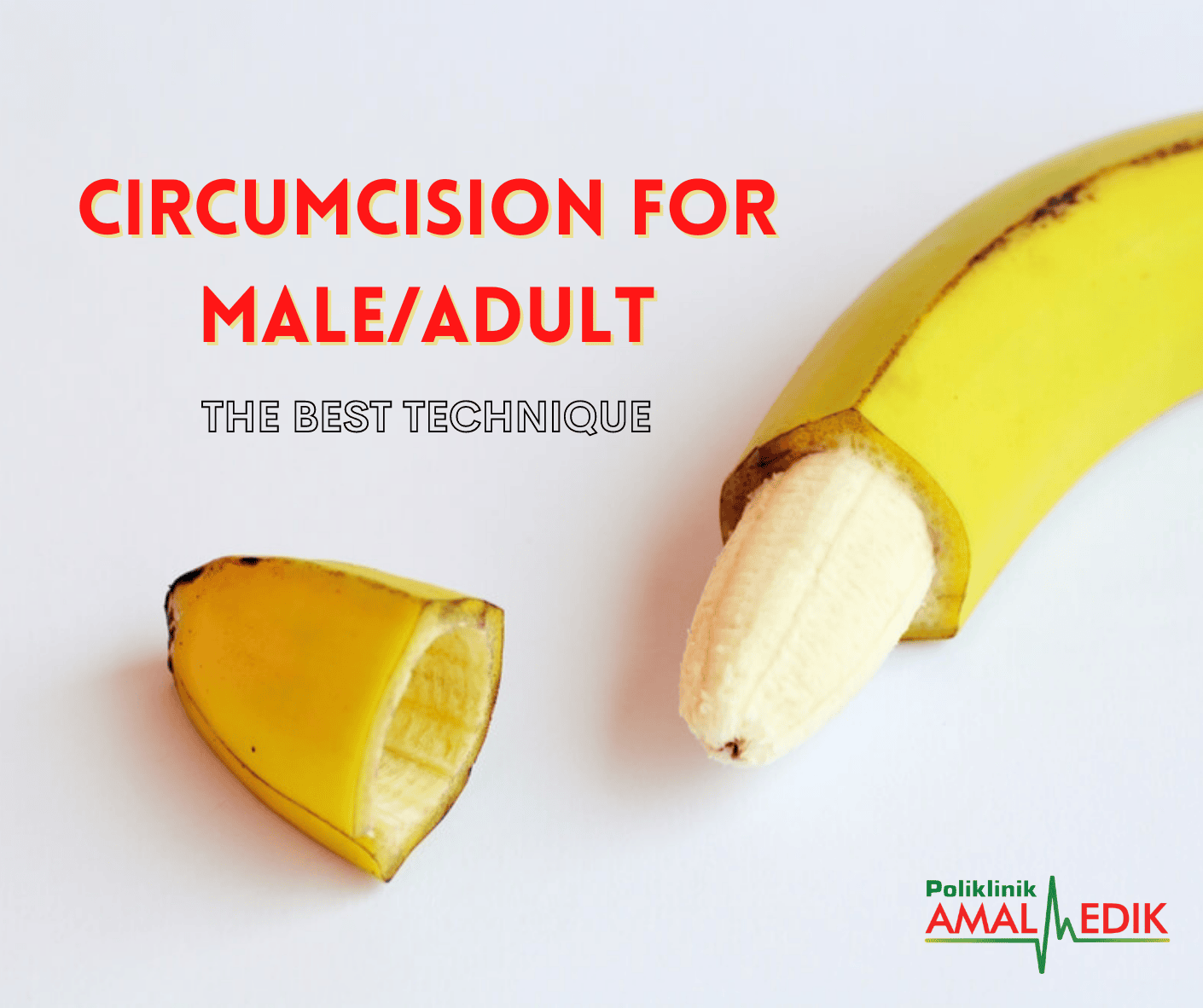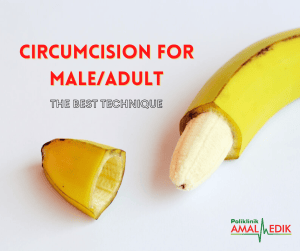
Have you heard about safe and painless male circumcision?
Are you looking for the latest technology for male kids/adult circumcision?
Let us introduce our specialty in performing adult circumcision. Before that, what you should know about circumcision?
Circumcision is the minor surgical procedure of removing the foreskin, the tissue that covers the head (glans) of the penis. Circumcision is a religious or cultural tradition for some families and it may be done for medical reasons
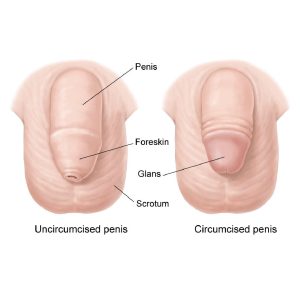
Indication For Circumcision:
- Tight Foreskin or Phimosis
- A condition where the foreskin is too tight to be pulled back over the head of the penis (glans). Phimosis is normal in babies and toddlers, but in older children it may be the result of a skin condition that has caused scarring. It is not usually a problem unless it causes symptoms.
- Paraphimosis
- Paraphimosis occurs when the foreskin is not pulled back over the glans after retraction. A tight constricting band ensues, causing swelling of the distal penis and acute discomfort
- Thick or Long Foreskin
- Hygiene
- Circumcision makes it simpler to wash the penis. However, boys with uncircumcised penises can be taught to wash regularly beneath the foreskin.
- Foreskin Diseases (Posthitis/Balanitis)
- Balanoposthitis affects about 1% of boys and occurs when there is erythema and oedema of the prepuce and glans (in balanitis the inflammation is confined to the glans). The foreskin is usually non-retractile. It is often accompanied by purulent discharge, and the inflammation may spread along the shaft of the penis associated with dysuria
- Recurrent Foreskin Infection
- Religious or Sociocultural Practice
- Decrease the risk of sexually transmitted disease (STD)
Risks and Complications:
The most common complications associated with circumcision are bleeding and infection. Side effects related to anesthesia are possible as well. Rarely, circumcision might result in foreskin problems. For example:
- The foreskin might be cut too short or too long
- The foreskin might fail to heal properly
- The remaining foreskin might reattach to the end of the penis, requiring minor surgical repair
So, how it’s done?
There are a few techniques that usually can be offered to patients for kids/adult circumcision:
- Conventional method – It’s done by using scissors by dorsal slit method. It was rarely used now for elective circumcision due to the high risk of bleeding and long operating hours.
- Laser method – by using an electrocautery knife to cut the excess skin. Generally, it is better than the traditional method using scissors.
- Circular Stapler Technology – disposable medical instruments that have been used for rapid, safe and efficient removal of the foreskin (prepuce) since earlier this decade and they became popular over the past few years. These devices cut as they close the wound in a precise manner using small metal clips. Cosmetically better!
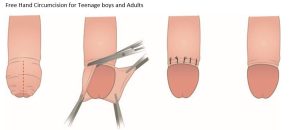
Conventional Method – Using scissor with dorsal slits technique
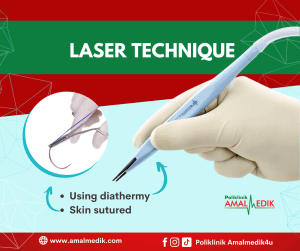
Laser Method (electro-cautery)
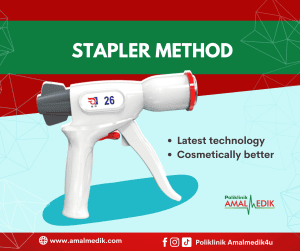
Circular Stapler Method
So which will you choose? A clinical study have been done comparing between Circular Stapler technique vs the Conventional circumcision technique. In conclusion, the circular stapler is a more easy and user-friendly device for male circumcision.
- shorter operative time (about 10 minutes to complete)
- lower blood loss volume
- fewer postoperative complications than conventional circumcision
- cosmetically much better
And good news for you, in Poliklinik Amalmedik we offer the needleless injection for the local anesthesia before proceeding with the circumcision. So patients will feel more comfortable and painless during the procedure.
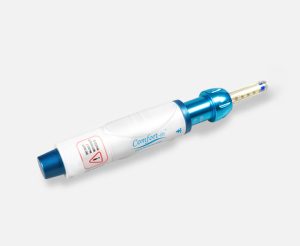
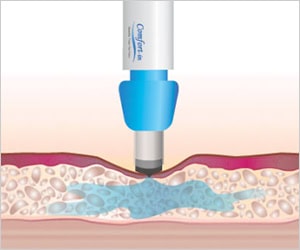
Needless Injection for local anesthesia
Last but not least, circumcision is an art, the main thing is depending on the hand of the surgeon. In Poliklinik Amalmedik, our doctors are trained with multiple techniques/methods of circumcision. Our aim is for the patient’s quality of life.
Visit us for a consultation if you are considering circumcision. Book an appointment with us today to find out more!
Reference:
Jin XD, Lu JJ, Liu WH, et al. Adult male circumcision with a circular stapler versus conventional circumcision: A prospective randomized clinical trial. Braz J Med Biol Res. 2015;48(6):577-582. doi:10.1590/1414-431X20154530
